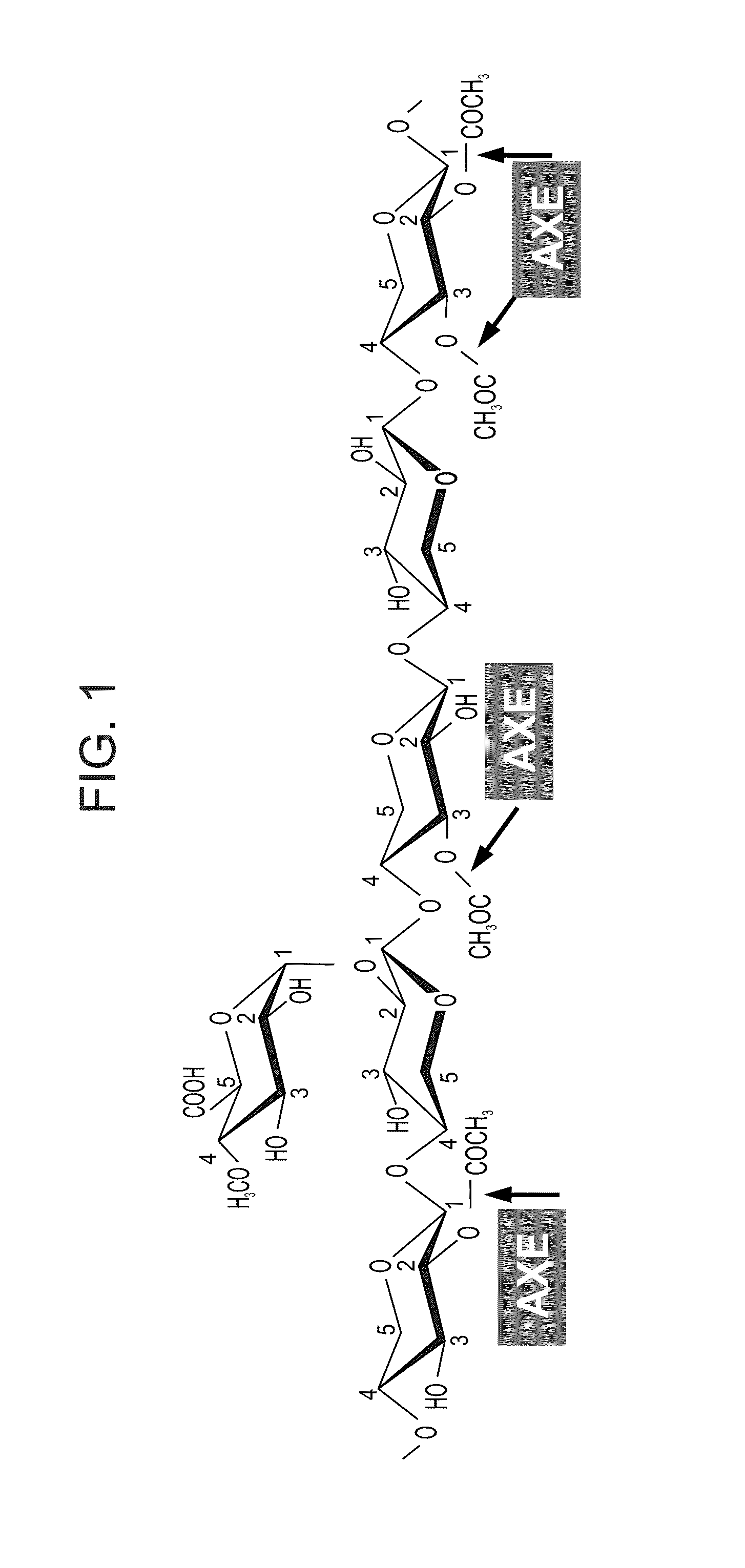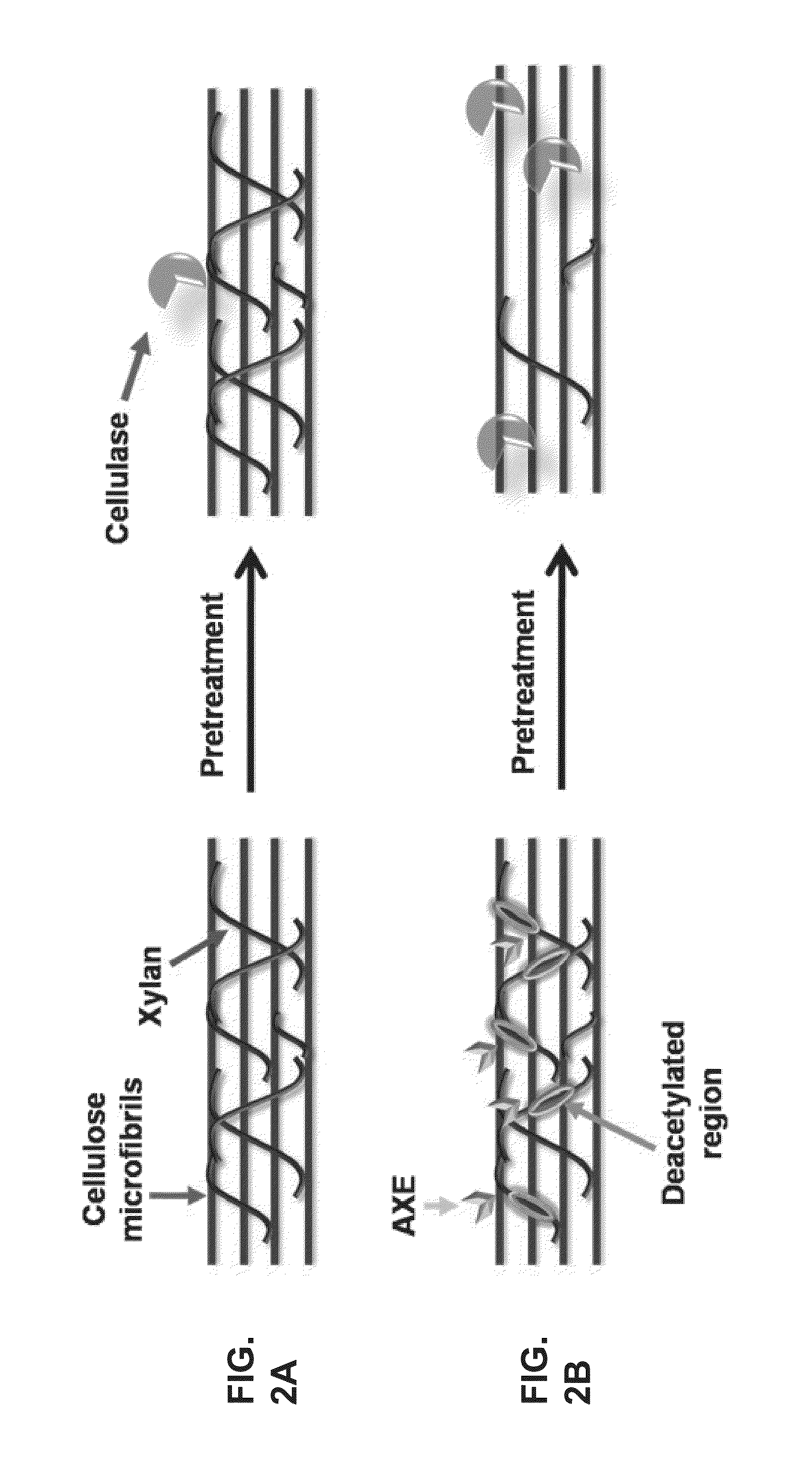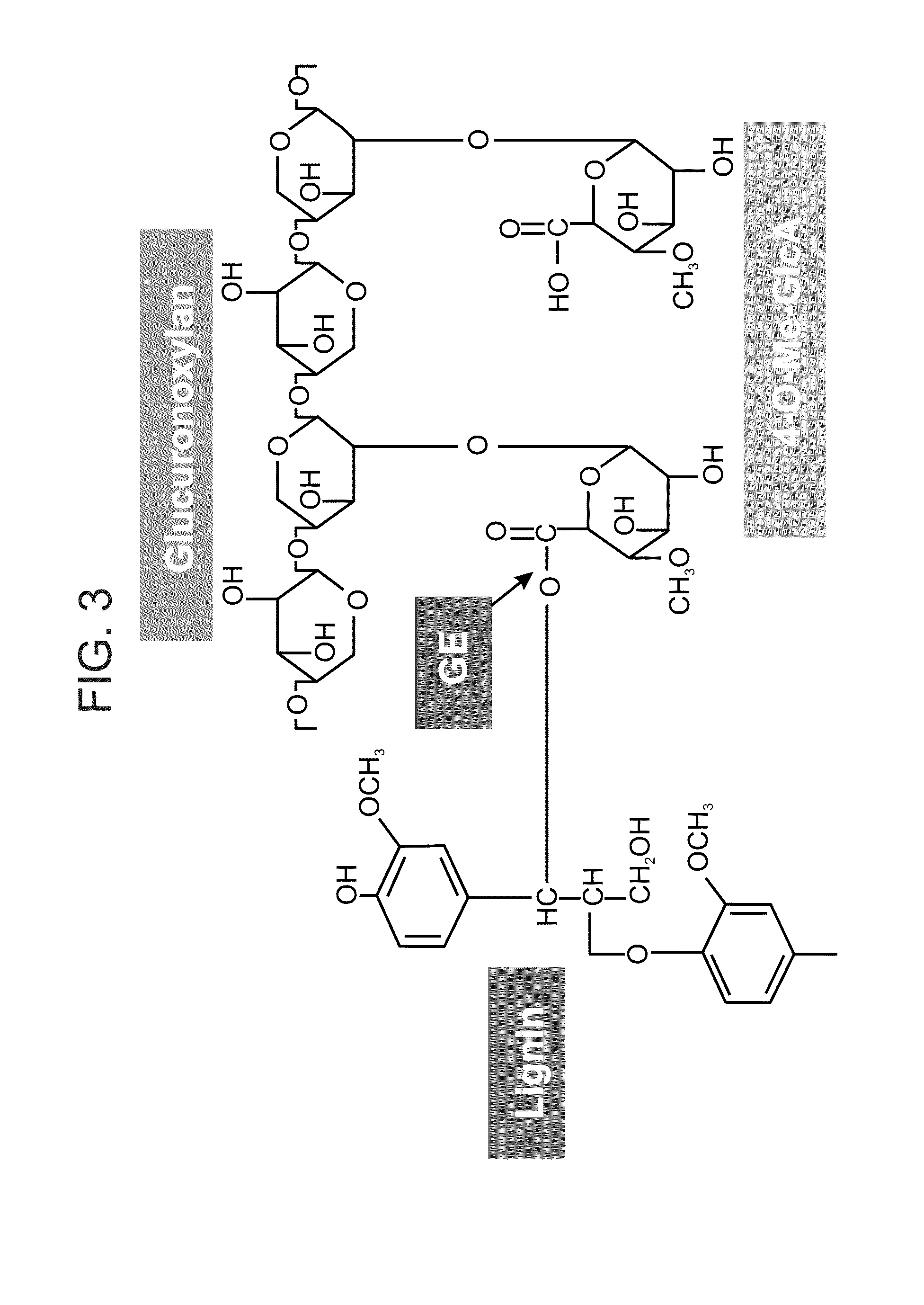Transgenic plants with improved saccharification yields and methods of generating same
a technology of hemicellulose ester and saccharification yield, which is applied in the field of transgenic plants, can solve the problems of high feedstock cost, environmental hazards, and current energy consumption methods based primarily on fossil fuels, and achieve the effects of reducing lignin hemicellulose ester crosslinks
- Summary
- Abstract
- Description
- Claims
- Application Information
AI Technical Summary
Benefits of technology
Problems solved by technology
Method used
Image
Examples
example 1
Cloning and Transformation of Acetylxylan Esterase (AXE) and Glucuronoyl Esterase (GE) into Tobacco Plants
[0263]Promoters:
[0264]Since both AXE and GE over-expression within the plant may reduce plant structural integrity and fitness, inventors directed the expression of these enzymes to specific developmental stages such as secondary cell wall development or xylem cells development. Expression of a gene at a specific developmental stage can be done by developmentally specific promoters. Examples for such promoters, for example promoters that are expressed only during secondary wall-thickening, are CesA7 promoter and 4CL-1 promoter. Examples for promoters that are expressed in xylem tissue development are FRA8 promoter and DOT1 promoter.
[0265]To achieve expression at the xylem developmental stage AXE and GE were fused to the FRA8 promoter (SEQ ID NO: 21).
[0266]Constitutive over-expression of AXE by CaMV 35S promoter was also tested.
[0268]In order to direct the AX...
example 2
Tobacco Transformation and PCR to Genomic DNA
[0274]Leaf-disc transformation was performed with Nicotiana tabacum-SR1 plants as described previously [Block, M. D. et al., EMBO Journal (1984) 3: 1681-1689]. More than 15 independent tobacco transformants were generated for each binary vector, propagated in vitro and transferred to the greenhouse. Tobacco plants over-expressing AXEII under the control of the 35S promoter flowered earlier and showed various levels of modified phenotype, such as retarded growth and lower stem caliber (data not shown), as compared to plants expressing AXEII or AXEI under the control of the FRA8 promoter or wild type plants (untransformed plants grown under the same growth conditions). The presence of the transgene was confirmed by western blot analysis to the nptII protein (data not shown) and by PCR (FIGS. 5A-D) on genomic DNA using specific primers for AXE or GE (Table 1). The binary vectors were used as a template for positive control.
TABLE 1PCR primers...
example 3
Transcription Analysis of the Transgenic Plants
[0275]AXE and GE expression patterns were examined by RT-PCR (FIGS. 6A-H). Total RNA was isolated from leaves of tobacco plants. DNA removed by DNAse. PCR was performed using cDNA from the first-strand reaction with primers specific for the AXE and GE (see Table 1, above). The binary vectors were used as a template for positive control. To confirm negative DNA contamination PCRs were generated without reverse transcriptase.
PUM
| Property | Measurement | Unit |
|---|---|---|
| pressure | aaaaa | aaaaa |
| temperature | aaaaa | aaaaa |
| temperature | aaaaa | aaaaa |
Abstract
Description
Claims
Application Information
 Login to View More
Login to View More - R&D
- Intellectual Property
- Life Sciences
- Materials
- Tech Scout
- Unparalleled Data Quality
- Higher Quality Content
- 60% Fewer Hallucinations
Browse by: Latest US Patents, China's latest patents, Technical Efficacy Thesaurus, Application Domain, Technology Topic, Popular Technical Reports.
© 2025 PatSnap. All rights reserved.Legal|Privacy policy|Modern Slavery Act Transparency Statement|Sitemap|About US| Contact US: help@patsnap.com



